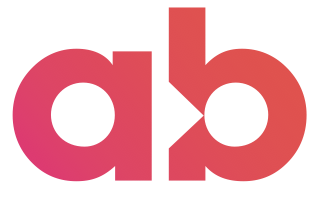Blind spots: how unacknowledged biases can undermine effective leadership
Leadership Blog

Written by Achieve Breakthrough

In a recent article, we explored how leaders should step away from safety and embrace authenticity – truly putting themselves at stake in the process. But being brave and leading from the front is only really effective if we’re aware of the biases that can limit our possibilities and narrow our horizons.
In this article, we explore why breaking the shackles that tie you to your biases is vital to building diverse, high-performing teams.
Three steps to sealing the truth
Once we have a well-established belief, idea, or point of view about something, we can often get stuck in our ways. Our idea of the truth can be like a splinter that lodges itself a little too deeply and is difficult to remove.
Often referred to as ‘confirmation biases’, these preconceived interpretations serve as the lens through which we view things, and we will manipulate how we see facts and situations so that they fit into our already established narrative. We apply these biases not only to other groups of people but to ourselves, diminishing our scope of possibilities.
These biases lodge themselves within our frame of reference in three steps. The first step we take is making an assessment. Let’s suppose I make the assessment that only people who have a background in finance are eligible for a certain promotion within my organisation.
The next step to sealing in this belief is finding evidence to support it: I notice that Jane, who has previously worked in finance, has been promoted into this position and I presume it’s because of her financial experience, overlooking the fact that she has the best results in the company. I notice that John, who has never worked in finance, and coincidentally has the worst results in the company, wasn’t promoted even though he went for the promotion. This reinforces my belief that only people with a background in finance are promoted into this position.
Finally, I misinterpret, misconstrue and misread enough situations that my bias toward people that haven’t worked in finance not being fit for promotion becomes my truth. Once we view something as unequivocally true, it is difficult to loosen our grip on this belief. If I believe I cannot get the promotion based on this “truth”, I have built a low ceiling for my own success, limiting the risks I will take or roles I will apply for. This shows how our biases build boundaries for what we think we can achieve.
Context is decisive
Another form of bias that is often quietly working away in the depths of our mind is unconscious bias. In essence, this is when we make prejudice judgements that favour, for example, one group of people over another.
The phrase “unconscious bias” itself is often put in a box marked “D&I” and stored on a shelf for HR to deal with later. But the truth is, for every leader throughout an organisation, unconscious bias is moulding the way we see situations, groups of people and even ourselves.
Our context is decisive and these biases sculpt the context in which we view things. Every problem you face within your organisation operates within a context and this context can quickly become a limitation.
If your biased view is that only young people are good with technology and that is holding you back from applying for a role that includes an element of IT in it, you are contextualising the situation through a lens of failure. This, in turn, furthers your bias which then shapes your context. It’s a vicious circle that plays out over and over again unless we recognize these biases and break the chain.
Putting it into practice
From a humanitarian standpoint, shattering our biased views is important. But from a business perspective, it is essential.
Not only do these biases hinder us from putting together the most versatile, highest-performing team possible, they also frame our own beliefs of what we think is achievable within ourselves. Biases about ourselves are a prison made of our own limitations and can be difficult to break out of. And when it comes to determining the ceiling of our success, our aim should be to raise the roof.
Looking to create an impossible future? Get in touch to explore how we can help you ignite your ambitions.
Published 29/10/2024
Subscribe by Email
Achieve more breakthroughs. Get expert leadership ideas, insights and advice straight to your inbox every Saturday, as well as the occasional bit of news on us, such as offers and invitations to participate in things like events, webinars and surveys. Read. Lead. Breakthrough.
Related posts
Leadership Blog
Leadership burnout: Expanding bandwidth to thrive through complexity
Achieve Breakthrough | 16/12/2025
Leadership Blog
What triggers you as a leader, and how to work with it?
Achieve Breakthrough | 09/12/2025
Leadership Blog
Why it’s impossible to lead with one foot still in your old role
Achieve Breakthrough | 03/12/2025
Leadership Blog
Why a leader’s true value lies in what they enable, not just what they know
Achieve Breakthrough | 25/11/2025
